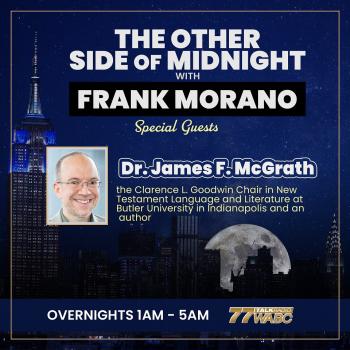I am serious about what I suggest in the title of this blog post, even though trying to grab readers’ attention is definitely a motive for putting it this way. There are things to be said by way of clarification that couldn’t go in the title. For one thing, I find the terminology of “high Christology” and “low Christology” problematic. For another, I think the extent of development in the New Testament period is seriously overestimated. That is not, however, because I think the earliest Christology already presents a Jesus who is “fully God” as “the second person of the Trinity.” Rather, it is because I think that even the later works in the New Testament view Jesus as a human being who, on the one hand, embodies the presence and Spirit of the one God, and on the other hand, has been given authority and an exalted status by the one God. There are, to be sure, differences of nuance and expression. But there is also more consistency, I think, than is sometimes recognized.
So what do I mean by saying that John’s is the “lowest” Christology, especially when I find this terminology unhelpful? Where many earlier sources simply presuppose that Jesus is God’s authorized agent and emissary who is by definition subordinate and obedient to the one God, the Gospel of John emphasizes this. “The Son can do nothing of/by himself” (5:19). The Father is “the only true God” (17:3). Jesus is “a man who has told you the truth that I heard from God” (8:40). If Jesus bears the name of God, it is the name that God gave him, just as Paul also asserts in Philippians 2:6-11. Whether John has moved the bestowal earlier depends on whether the giving of the name “before the foundation of the world” means he had it as a possession as an already-existing person or pre-existent soul, or was destined to bear it and so it was in that sense already given to him. Either way, the one is not a “higher” Christology than the other. Both view the name as given by the one God.
Whether Paul envisaged Jesus as pre-existing as an individual, or viewed the human Jesus as the embodiment of the Wisdom of the one God, is not a debate that we need to revisit here.
A question I keep coming back to is how the descent of the Son of Man in the Gospel of John relates to the descent of the Spirit and/or the Logos. One option is to treat them as one and the same: the spirit that descends on Jesus is the Son of Man, the heavenly Doppelganger of the earthly Messiah, so that the two become one. As one sees in the New Testament as well as other early Jewish texts, there is a blurriness in the realm of spiritual beings, as God, personified attributes, the Angel of the Lord, and other terminology appear. In Revelation and in 1 Timothy 5:21 we find belief in God, Christ, and elect angels/the seven spirits of God, the latter denoting the seven principal angels (sometimes called archangels). Each human being was thought to have an angel that corresponded to them. That there was an angel of each nation as well made it natural to associate that angelic prince with the ruler of the nation. When YHWH and El came to be identified, having the king be identified with a supreme spirit in the celestial realm blurred into identification with the supreme God. In this view, Christians then share in that same spirit, share with Jesus a celestial Doppelganger who can both indwell them and serve as advocate in the spiritual realm. To be “in Christ” as Paul puts it makes a different kind of sense when some of these ancient ideas are brought into the picture.
Another option is to treat the descent as simultaneous but nevertheless have there be two that are referred to, the Son of Man being the (soul or angelic counterpart of the) Messiah who is nonetheless full of God’s Wisdom/Word/Spirit already prior to the appearance of the human Messiah on earth.
All of the New Testament works view Jesus as a human being who embodies the divine presence and action, God’s Spirit, and who is exalted to a status second only to the one God. John makes some of these elements more explicit and elaborates them in new ways in response to objections that had come up in the intervening years. Nonetheless, his portrait is not a “higher Christology” than the others, just one that is (if you will excuse the puns), at the same time more fleshed out and more spirited in its articulation. If it is “higher” then it is also “lower” because John emphasized the superiority of the Father and the submission of the Son more than others do. But as I said from the beginning, the categorization of these works as “high” and “low” is problematic.
As you can presumably tell, even after a doctorate, a second book, and decades of research spent reflecting on and exploring these matters, I still have questions. I am fine with that–I’d much rather keep puzzles unsolved and work away at them in the longer term, than declare them done while many of the pieces are still missing or are forced together.
The above is all a longer response to a question that was asked on Twitter than could be offered in tweets. The question was which work in the New Testament has the highest Christology, and that tweet suggested Revelation as the highest, and I responded by sharing the chapter on the Christology of the Book of Revelation from my book The Only True God. I also shared the following as relevant:
See also:
The Divine and the Divisive in John
The Question of Christ’s Relation to God
Ben Witherington’s mult-part series:
https://trinities.org/blog/revised-version-of-trinity-in-the-stanford-encyclopedia-of-philosophy/
Heraclitus’ Logos and our time
Did early Christians interpret Old Testament violence “through Jesus”?













